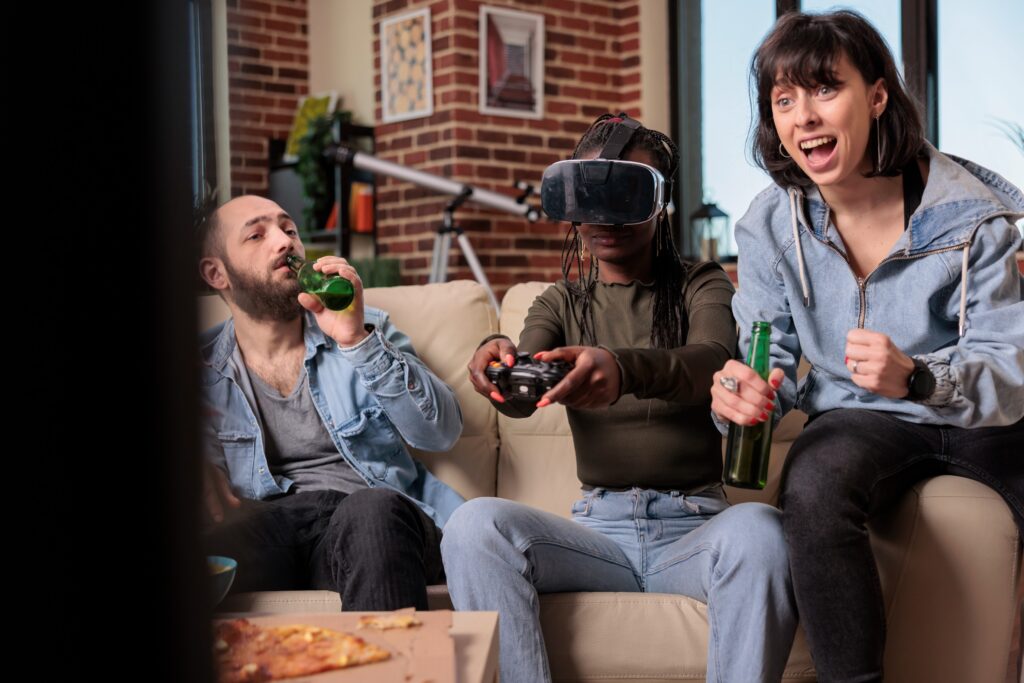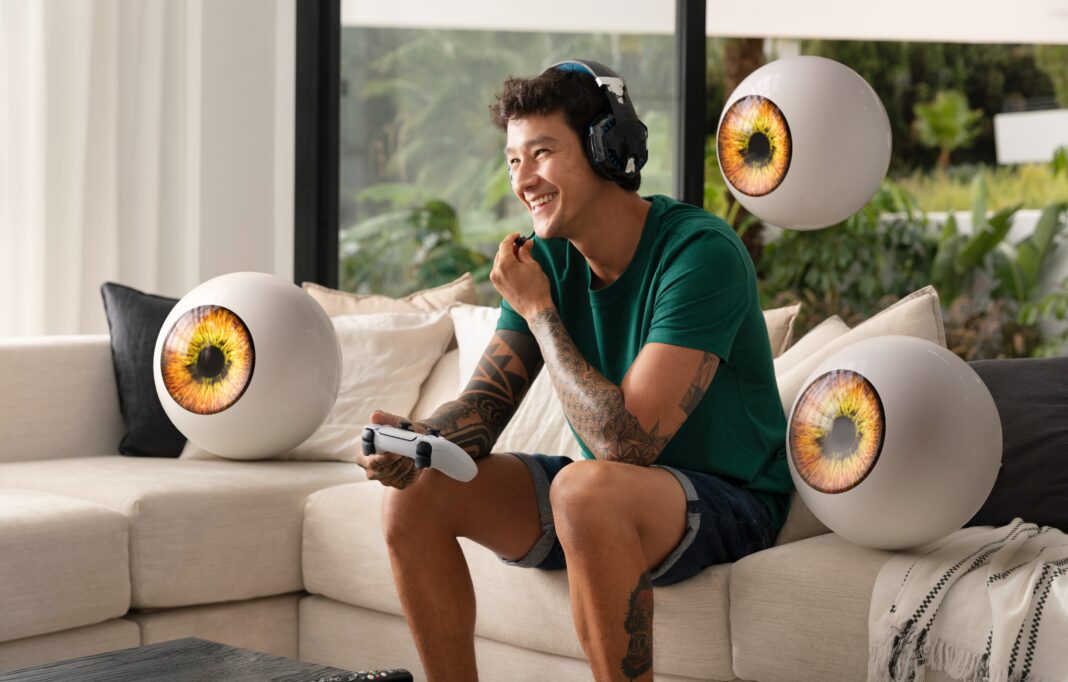Haptic feedback has fundamentally altered the way players interact with digital environments by introducing a tangible, physical dimension to gaming. This technology moves beyond traditional audio-visual stimulation to deliver tactile sensations that mirror real-world interactions. From the subtle vibration of a smartphone to the sophisticated force feedback in high-end VR gloves, haptic systems are redefining immersion in gaming.

This article provides an exhaustive exploration of haptic feedback, covering its mechanisms, applications, benefits, challenges, and future advancements. We will analyze how different gaming platforms utilize haptics, the psychological and physiological effects on players, and the technical hurdles developers face in implementation. By the end, you will understand why haptic feedback is not just an enhancement but a necessity for next-generation gaming experiences.
Haptic Feedback: Definition and Core Principles
What Is Haptic Feedback?
Haptic feedback, also known as kinesthetic communication, refers to technology that simulates the sense of touch through vibrations, pressure, or motion. Unlike passive touchscreens or standard controllers, haptic-enabled devices provide dynamic responses that mimic real-world interactions.
How Does It Work?
Haptic systems rely on actuators—small motors or piezoelectric components—that generate vibrations or resistance. These actuators are controlled by software algorithms that trigger responses based on in-game events. For example:
- Basic Rumble (Eccentric Rotating Mass – ERM): Found in older controllers, it produces simple vibrations.
- Linear Resonant Actuators (LRA): Delivers sharper, more precise vibrations (used in PlayStation 5’s DualSense).
- Force Feedback: Uses resistance mechanisms (e.g., steering wheels that stiffen during sharp turns).
- Electro-Tactile & Thermal Feedback: Emerging tech that can simulate temperature changes or electric pulses.
Types of Haptic Feedback in Gaming
- Vibration-Based Feedback
- Common in console controllers (Xbox, PlayStation, Nintendo Switch).
- Used for gun recoil, collisions, footsteps, and environmental effects.
- Force Feedback
- Provides physical pushback (e.g., racing wheels, flight sticks).
- Simulates weight, inertia, and mechanical resistance.
- Tactile Texture Simulation
- Recreates surface textures (e.g., sand vs. ice in Death Stranding).
- Uses high-frequency vibrations to mimic friction.
- Motion-Based Feedback
- Gyroscopic and accelerometer-driven responses (e.g., tilting controllers for steering).
- Full-Body Haptics (VR Suits & Gloves)
- Advanced systems like Teslasuit or bHaptics vests simulate impacts, wind, and temperature.
The Impact of Haptic Feedback on Immersion
1. Enhancing Realism Through Environmental Interaction
Modern games use haptics to ground players in their virtual surroundings. Examples include:
- DualSense Adaptive Triggers: Returnal uses varying trigger resistance to simulate weapon jams.
- Surface Differentiation: The Last of Us Part II makes walking on snow, glass, and mud feel distinct.
- Dynamic Weather Effects: Raindrops or gusts of wind are conveyed through subtle vibrations.
2. Deepening Combat and Action Sequences
Haptics make combat more visceral:
- Gun Recoil: Call of Duty mimics firearm kickback through controller vibrations.
- Melee Combat: Hellblade: Senua’s Sacrifice uses haptics to emphasize sword clashes.
- Explosions & Collisions: Games like Battlefield intensify explosions with layered rumble effects.
3. Emotional and Psychological Engagement
Haptics manipulate player emotions:
- Heartbeat Pulses: Horror games (Resident Evil Village) use rhythmic vibrations to build tension.
- Breathing Feedback: VR titles simulate breathing patterns to increase immersion.
- Narrative Cues: Subtle vibrations during dialogue choices (The Witcher 3) reinforce emotional weight.
4. Accessibility Benefits
Haptics improve gaming for players with disabilities:
- Directional Cues: Vibrations guide visually impaired players toward objectives.
- Tactile Alerts: Deaf players can “feel” audio cues like enemy footsteps.
Haptic Feedback in Virtual Reality (VR) Gaming
1. VR Controllers with Advanced Haptics
- Valve Index Knuckles: Finger-tracking with grip pressure feedback.
- Oculus Touch: Simulates object weight and texture.
2. Full-Body Haptic Suits
- Teslasuit: Uses electrical muscle stimulation for impacts and temperature changes.
- bHaptics TactSuit: 40-point vibration feedback for bullet hits and environmental effects.
3. Future of VR Haptics
- Microfluidic Skin Patches: Simulates touch without bulky wearables.
- Ultrasonic Mid-Air Haptics: Creates touch sensations in empty space (e.g., Ultrahaptics).
Challenges and Limitations
1. High Development Costs
- Custom haptic programming requires extensive resources.
- AAA studios invest heavily, but indie devs struggle to implement advanced haptics.
2. Battery Consumption
- High-fidelity haptics drain controller batteries quickly (e.g., DualSense’s shorter lifespan vs. DualShock 4).
3. Lack of Standardization
- Not all games support platform-specific haptics (e.g., Xbox Impulse Triggers vs. DualSense Adaptive Triggers).
4. Physical Fatigue
- Prolonged use of force feedback devices can cause muscle strain.
The Future of Haptic Feedback in Gaming
1. Next-Gen Actuator Technology
- Electroactive Polymers (EAPs): Flexible, energy-efficient actuators for finer vibrations.
- Magnetic Levitation Haptics: Zero-contact feedback for ultra-precise sensations.
2. Haptic-Enabled Cloud Gaming
- Latency reduction could enable real-time haptic streaming.
3. Neuro-Haptic Integration
- Brain-computer interfaces (BCIs) may one day simulate touch directly to the nervous system.
FAQ
1. Which gaming platforms have the best haptic feedback?
- PlayStation 5 (DualSense): Most advanced consumer-grade haptics.
- PC (VR/High-End Peripherals): Best for customizable force feedback.
- Mobile (iPhone Taptic Engine): Optimized for casual gaming.
2. Can haptic feedback be added to older games?
Yes, via mods or remasters (e.g., Grand Theft Auto V enhanced for PS5).
3. Does haptic feedback improve esports performance?
Marginally—pro gamers often disable it to reduce distractions.
4. Are there health risks with prolonged haptic use?
Minimal, but excessive vibration may cause temporary numbness (rare).
Conclusion
Haptic feedback is revolutionizing gaming by making virtual worlds tangible. As hardware evolves, we’ll see even more lifelike tactile experiences—from temperature shifts to simulated textures. Developers who master haptics will create deeper, more engaging games, while players will enjoy unprecedented levels of immersion.
Would you like additional technical breakdowns of specific haptic devices or case studies on haptics in competitive gaming? Let me know how I can expand this further.

